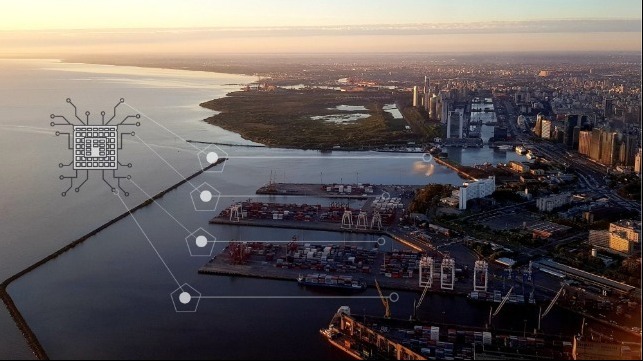New Maritime Simulation Software Model Developed for La Plata River

Siport21 develops, Siflow21, a new analysis and simulation maritime traffic software. This system compares different layout alternatives of waterways or port areas to select the optimized option and the resources needed for achieving the maximum operational efficiency.
The traffic prediction model built for La Plata and Parana Rivers (Argentina) stands out among first developments. The aim of this project was to evaluate the impact of planned dredging works and assess different locations for the development of new logistical infrastructure.
This area has a high miscellaneous traffic density with large developments on the agenda (modification/extension of container terminals, deepening projects and new port access) and several issues (LNG traffic influence and high anchorage occupation with diverse activities). This model was calibrated with one-year AIS data in order to improve its accuracy and reliability.
Siflow21 builds up a virtual representation of the vessels traffic in a port or complex waterway with concurrent traffic. Based on the results of the analysis, the port community can plan future investments in infrastructure (deepening or enlargement of navigation channels, additional port access, etc.) or make decisions about the management or operational optimization (new traffics, tidal window access, crossing rules, traffic priority, etc.).

that matters most
Get the latest maritime news delivered to your inbox daily.
This new tool, based on process simulation using queuing theory, has relevance to port agents related to maritime logistic transport: logistic operators, consultants, terminal operators, shipping companies, port and maritime authorities, etc.
The following solutions provided by Siflow21 are pointed out: definition of the maximum capacity of a port; bottleneck identification (tide, meteorological conditions, Pilots, tugs, etc.); optimization of ship access planning; congestion prediction due to traffic increase; changes in infrastructure or new terminals; identify interferences between operations; and evaluate the cost-benefit balance of the investments.
The products and services herein described in this press release are not endorsed by The Maritime Executive.
